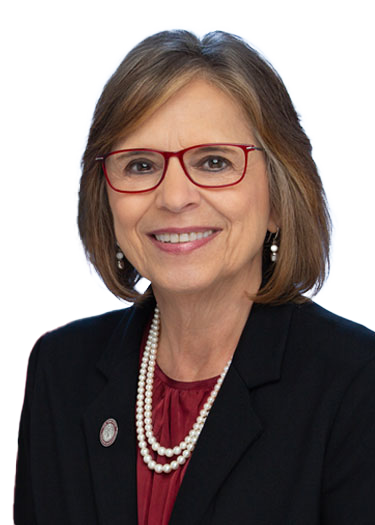Lupardo Secures $12.45M for Renovation of The Castle
SUNY Upstate Medical to expand Binghamton clinical campus
Assemblywoman Donna Lupardo (D-Endwell) and SUNY Upstate Medical University President David Smith, M.D. announced today that the 2008-2009 state budget (A.9803-D) includes $12.45 million to fund the expansion of SUNY Upstate Medical University’s “Clinical Campus” in Binghamton. Lupardo secured the funding in this year’s budget for SUNY Upstate to renovate the historic New York State Inebriate Asylum (also known as The Castle), on the grounds of the Greater Binghamton Health Center.
“This is a tremendous opportunity for our community, not just to save a national treasure, but to address the shortage of physicians and heath care workers in our region and throughout Upstate,” said Lupardo. “This year is the 150th anniversary of the Castle, and we certainly have much to celebrate now.”
“On behalf of SUNY Upstate Medical University, I want to acknowledge the outstanding leadership taken on this issue by Assemblywoman Lupardo,” said David Smith, M.D., President of SUNY Upstate Medical University. “We are grateful for her support and that of her colleagues and the dozens of people we met in Southern Tier during our discussions about this important initiative.”
“This project is key component of SUNY Upstate’s regional responsive growth agenda. As the region’s only academic medical center, we must listen to the concerns of the communities we serve throughout the region and adopt and develop strategies to address them. Moving ahead with our expansion plans for the Binghamton Campus will allow us do just that.”
SUNY Upstate Medical University established its Binghamton Campus in 1976 to address the shortage of primary care physicians and other health care workers in the Southern Tier. Once again there is a need to expand the number of physicians and health care workers serving New York State as a whole and its more rural regions in particular.
The Castle has approximately 85,000 square feet of potential space to develop. According to SUNY Upstate, many of the emerging and innovative needs that could be met by space are:
- Establishing a physician assistant program to be headquartered in Binghamton;
- Providing additional space for the Community Free Clinic, which SUNY Upstate is an umbrella for;
- Expanding residency training programs in the community, most notably psychiatry;
- Accommodating the increased need for student housing right at the Castle;
- A “Castle Conference Center” to support clinical, academic and research enterprises and;
- A museum dedicated to the history of the Inebriate Asylum and its institutional successors will be a centerpiece of community interest and tourism.
Construction of the Castle began in 1858 as the New York State Inebriate Asylum. It eventually became administrative offices and finally closed in 1993.
The Inebriate Asylum was the first major project designed and constructed by Isaac Gale Perry (1822-1904), a prolific New York State architect-builder. Perry went on to become the architect on many public buildings throughout New York State, including the State Capitol.
The Asylum's significance in the areas of health and medicine, social history and architecture was acknowledged with its 1997 designation as a National Historic Landmark. A year before it had been added to National and State Registers of Historic Places and in 1999 the Asylum was listed as one of New York State's most endangered buildings by the Preservation League of New York State.
“Today's announcement comes as wonderful news and is a true win-win situation for our community and SUNY Upstate Medical University,” said Roger Luther, a member of the grassroots Save the Castle Committee, whose efforts to promote the preservation of the Castle include creating a website and publishing a calendar as well. “A great deal of credit is owed to Dr. Smith for seeing the potential in this magnificent building and Assemblywoman Lupardo for her undying support and continuous efforts over many years to find an appropriate reuse for the building.”
“Roger’s commitment to saving the Castle has helped our community keep the issue of saving this historic landmark alive,” said Lupardo. “The restoration of the Castle and the expansion of the Clinical Campus will have a positive impact on our community for many years to come.”
The first phase of the building’s renovation (exterior) is projected to cost $12.45 million and the second phase (interior renovation and restoration) is projected to cost $22.85 million. Reconstruction of the original turrets would add $3.5 million.
